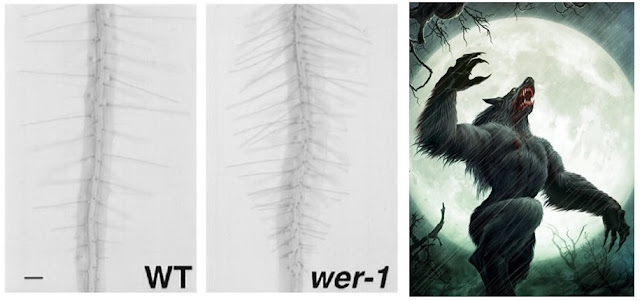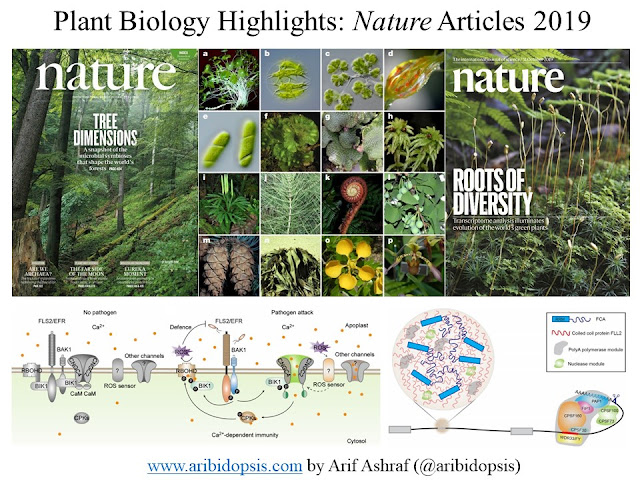Mutant Series: WEREWOLF (WER)
In the last post, we talked about a mutant which is unable to form root hair. In contrast, we will go through a mutant which produces too many root hairs.
Myeong Min Lee and John Schiefelbein from the University of Michigan were screening EMS-mutagenized seedlings for abnormal root hair phenotype. They picked up three mutants produce too many root hairs (hairy phenotype) and eventually figured out that these three mutants represent one gene. Due to its "hairy" phenotype, they named it WEREWOLF (WER)!
In the above picture, we can easily compare the hairy phenotype between wer-1 and wild-type. This name is based on the movie WEREWOLF, where it has a hairy appearance too.
In general, root hair formation is the ideal example of epidermal patterning. In the epidermis, root hair and non-root hair cells are organized one after another. Less or more number of root hair formation represent the aberration of epidermal patterning.
In case of wer-1, it has lost its positional information and every cell in the epidermal layer become hair cells. In brief, the WER gene encodes a typical MYB-type transcription factor and expresses in non-hair cells. Due to wer-1 mutant, non-hair cells lost its positional fate and produce root hairs.
Advance readers may follow the article below for the details about root hair development:






Comments
Post a Comment